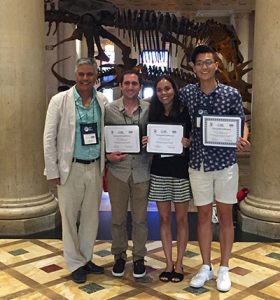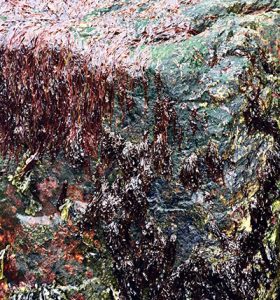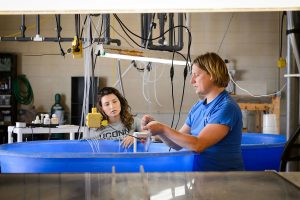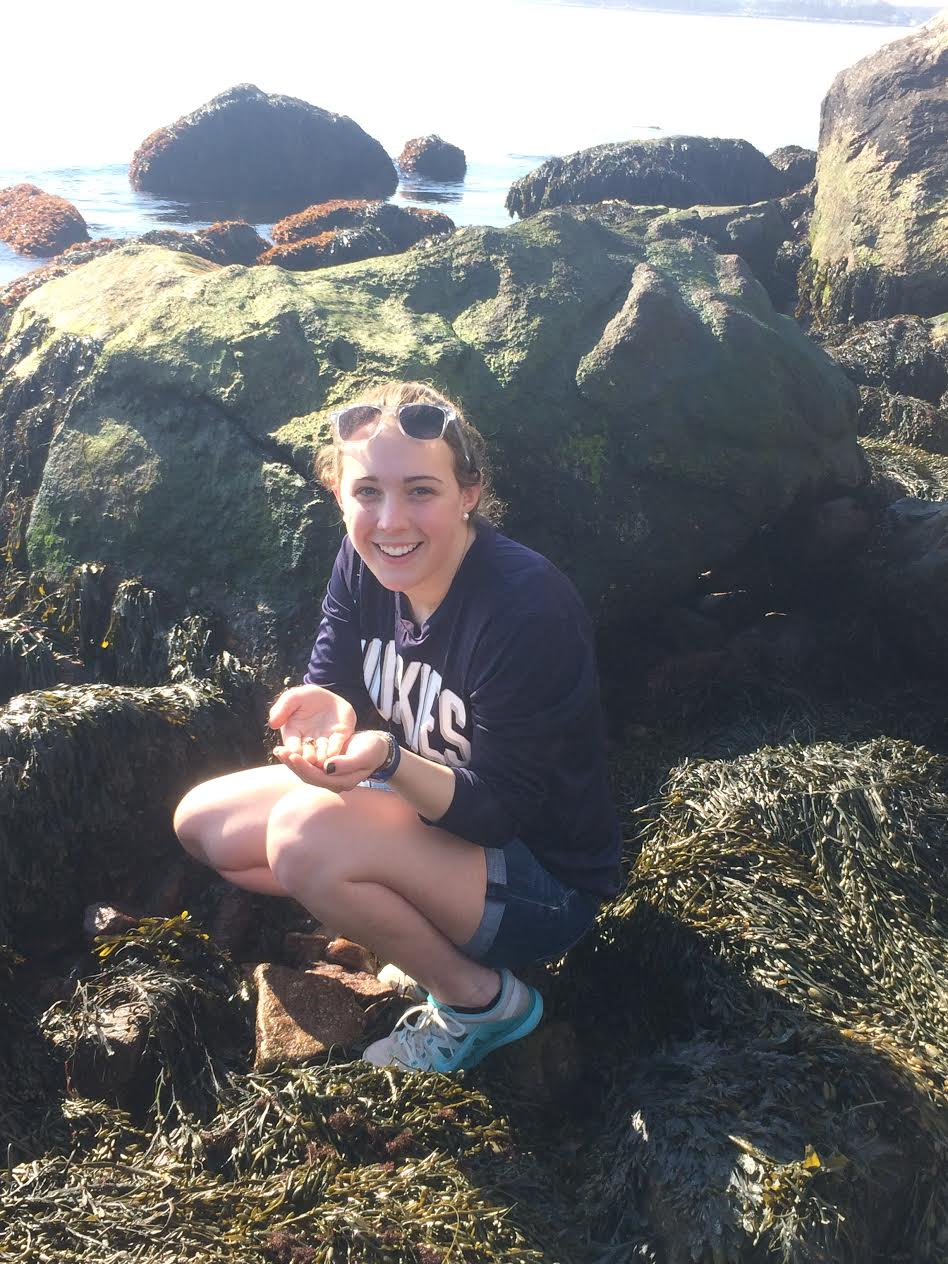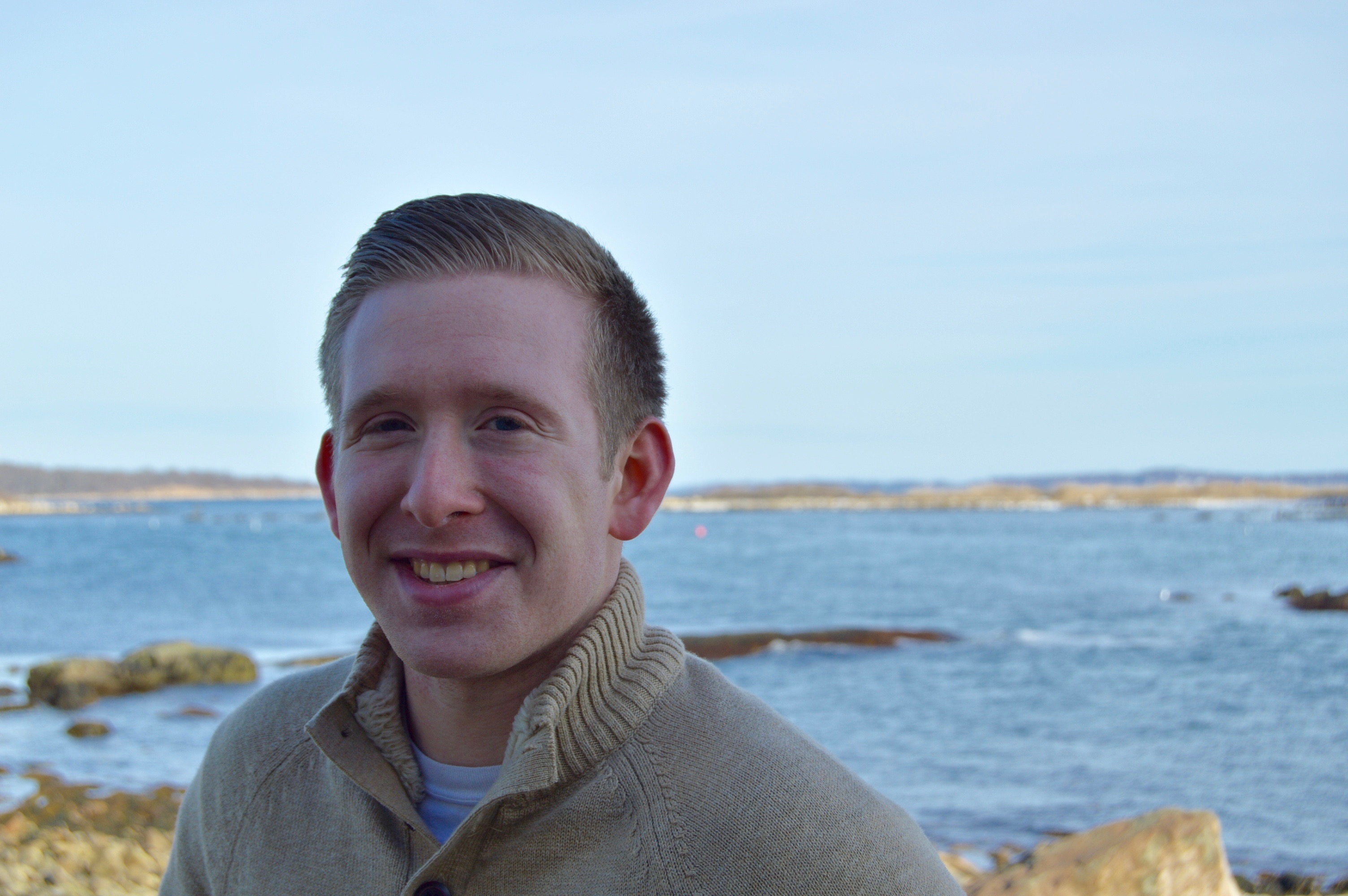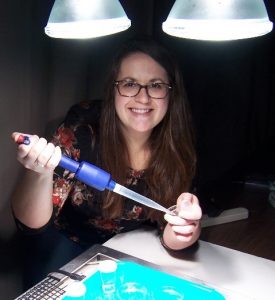
The accumulation of mercury, primarily as methylmercury, into fish and seafood consumed by humans is a global health concern. Recent research has highlighted the potential sources of methylmercury in the ocean, and demonstrated that it can be formed by microbial methylation of inorganic mercury. However, one of its sources could also be the degradation of dimethylmercury. There has been little study, however, of the formation pathways of dimethylmercury in the ocean, even though it has been detected in surface and deep waters.
A new paper published in Nature Scientific Reports (http://www.nature.com/articles/srep27958) by researchers in the Department of Marine Sciences (DMS) at the University of Connecticut has shed light on potential pathways for its formation, and suggests that dimethylmercury may be formed by abiotic processes from methylmercury. These studies were carried out by research scientist Sofi Jonsson and graduate student Nashaat Mazrui in Robert Mason’s laboratory. Their experiments show that dimethylmercury can be formed in the presence of iron sulfide particles, as well as other metal sulfide particles, via the reaction of two methylmercury molecules bound to the particle surface. The products of the reaction are dimethylmercury and inorganic mercury, which is precipitated onto the surface. In addition, these reactions were also shown to occur in the presence of organic compounds with reduced sulfur groups (thiols). The proximity of the bound methylmercury molecules determines the rate of the reaction, and the reaction is more favorable with organic compounds with multiple thiols.
“The reaction pathways are highly favorable and we were able to show that the reactions occur under a wide variety of conditions” said Jonsson “and our calculations suggest that these mechanisms could account for much of the dimethylmercury in the ocean.” Mason commented that recent estimates suggest that about half the methylmercury formed in the upper ocean is from the degradation of dimethylmercury, and that further studies are needed to examine the importance of the proposed pathway compared to other mechanisms. The authors suggest that such reactions could be occurring within particles in the ocean, or within microbial cells. It is also possible that the reactions could occur on the surface of nanoparticles and Mason’s group, in collaboration with Jing Zhao at the Department of Chemistry (UConn), will further explore this possibility by studying these reactions on both natural and manufactured nanoparticles, and the factors that influence the reaction rate.
Early measurements of dimethylmercury in the equatorial Pacific Ocean were made by Jon Kim and Robert Mason, while graduate students at DMS, and many other studies have reported its presence in ocean waters since then. One place where dimethylmercury has been measured in higher concentrations is the Arctic and a recent modeling paper by researchers at Harvard suggests that a large fraction of the methylmercury produced in the Arctic is converted to dimethylmercury. Although the paper published from researchers at Harvard does not propose a mechanism for this reaction, it could involve the reactions proposed on particle surfaces in the water or sediment. Jonsson will later this summer participate in a research expedition in the Arctic onboard the Swedish icebreaker Oden which will allow her to test some of the ideas about formation and stability of dimethylmercury in this region.

